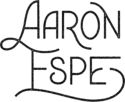I have this recurring dream. I’m on stage performing in front of a crowd, but I forget the words and melody.
I start making up gibberish. Gibberish words over gibberish melodies while I strum my guitar. It’s like I’m scatting, but it’s not supposed to sound improvised. It’s supposed to sound like completed lyrics and melodies. Good ones, too. The kind people pay money to come and listen to.
My goal in the dream is to get close enough to actual sounding lyrics so I can blame the sound person for any listener complaints. I do this for a fairly long time until I wake up.
I’ve talked to enough songwriters who have the same recurring dream to know it’s a “thing.” Maybe you’ve experienced it, too. I bring it up because my approach to writing melodies in the dream is pretty similar to my approach in real life (minus the cold sweats).
It’s making stuff up in the moment, seeing what feels good. You’re kind of just scatting with words, vowel sounds, melodic shapes until the pieces start to fit like a puzzle.
Imagine someone said, “Start whistling a made up tune right now.” Do you know what you’d do? You’d start by whistling one note until you moved onto another and another.
I’ll be honest, writing melody is difficult to describe because, for me, it’s mostly intuition. I don’t write anything down. I don’t know what notes I’m singing. I improvise until eventually I keep singing the same thing in the same places.
If I’m writing with other people, one of us is improvising while the other is listening and writing.
“Oh, I love that melody,” I’ll say, then sing it back to them. We might record that clip so we don’t forget it. This goes on and on until we have all our melodic “shapes.” One for the verses, one for the chorus, one for the bridge, and maybe some ad lib stuff, here and there.
But it’s all just going for it and having fun. Not worrying whether you’re copying somebody else or whether anybody’s watching.
You’re just trying to feel it out until your melodies are complimenting your lyrics and vice versa.
Side note: If you want to geek out on writing melodies, I highly recommend the book Tunesmith by Jimmy Webb. He goes into great technical depth on the subject.

